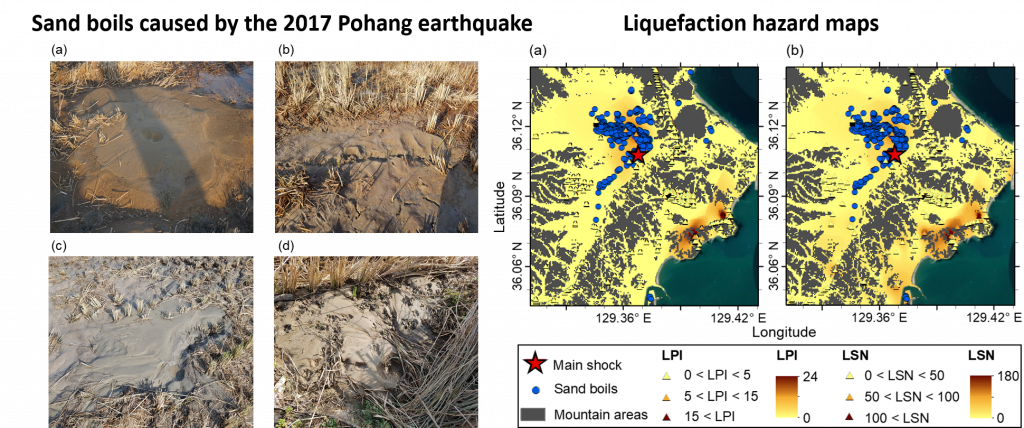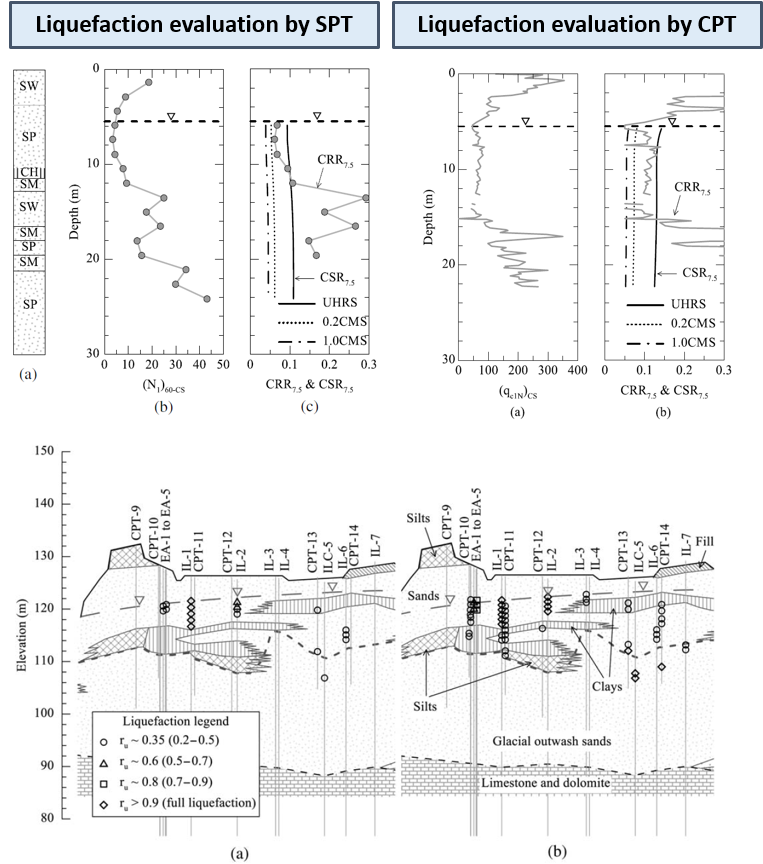Liquefaction
Related articles:
Han-Saem Kim, Mirae Kim, Laurie G. Baise, and Byungmin Kim* (2020), Local and regional evaluation of liquefaction potential index and liquefaction severity number for liquefaction-induced sand boils in Pohang, South Korea, Soil Dynamics and Earthquake Engineering
Youssef M. A. Hashash, Norma A. Abrahamson, Scott M. Olson, Steve Hague, and Byungmin Kim (2015), Conditional Mean Spectra in Site-Specific Seismic Hazard Evaluation for a Major River Crossing in the Central United States, Earthquake Spectra, v31, 47-69
Liquefaction is a phenomenon whereby a saturated soil loses strength and stiffness in response to an applied stress, usually earthquake shaking, and behave like a liquid. It often results in sand boils, lateral spreadings, ground and building settlements, and landslides.
The M5.4 Pohang earthquake caused hundreds of liquefaction-induced sand boils. Using the borehole data, we generated liquefaction hazard maps. We observed some ground settlement in the areas where the liquefaction hazard was high.

